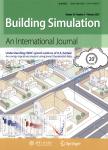版权所有:内蒙古大学图书馆 技术提供:维普资讯• 智图
内蒙古自治区呼和浩特市赛罕区大学西街235号 邮编: 010021

作者机构:Department of Electrical EngineeringUniversity Carlos III of MadridMadridSpain Department of Building SimulationZEROCEM SLSevilleSpain Department of Building ConstructionsUniversity of GranadaGranadaSpain Department of Building Constructions IIUniversity of SevilleSevilleSpain Section of Design for SustainabilityDepartment of Civil and Mechanical EngineeringTechnical University of DenmarkKgs.LyngbyDenmark
出 版 物:《Building Simulation》 (建筑模拟(英文))
年 卷 期:2024年第17卷第3期
页 面:459-482页
核心收录:
学科分类:07[理学] 070602[理学-大气物理学与大气环境] 0706[理学-大气科学]
基 金:This study was funded by the Urban Innovative Actions initiative(European Commission),under the research project UIA04-212 Energy Poverty Intelligence Unit(EPIU),the Spanish Ministry of Science and Innovation,under the research project PID2021-122437OA-I00“Positive Energy Buildings Potential for Climate Change Adaptation and Energy Poverty Mitigation(+ENERPOT)” the Andalusian Ministry of Development,Articulation of the Territory and Housing,under the research project US.22-02“Implicaciones en la mitigación del cambio climático y de la pobreza energética mediante nuevo modelo de confort adaptativo para viviendas sociales(ImplicAdapt)”.The authors also acknowledge the support provided by the Thematic Network 722RT0135“Red Iberoamericana de Pobreza Energética y Bienestar Ambiental(RIPEBA)”financed by the call for Thematic Networks of the CYTED Program for 2021
主 题:adaptive thermal comfort building energy simulation energy efficiency climate change adaptive setpoint temperatures local comfort mode
摘 要:It has been found in recent years that using setpoint temperatures based on adaptive thermal comfort models is a successful method of energy *** studies using adaptive setpoint temperatures incorporate international models from ASHRAE Standard 55 and *** study,however,has instead considered a regional Brazilian adaptive comfort *** study investigates the energy demand arising from the use of a local Brazilian comfort model in order to assess the energy implications from the use of the worldwide ASHRAE Standard 55 adaptive model and various fixed setpoint *** of Brazil’s climate zones,full air-conditioning,mixed-mode building operating modes,present-day climate change scenarios,and future scenarios—specifically Representative Concentration Pathways(RCP)2.6,4.5,and 8.5 for the years 2050 and 2100—have all been taken into account in building energy *** use of adaptive setpoint temperatures based on the Brazilian local model considering mixed-mode has been found to significantly reduce energy consumption when compared to static setpoint temperatures(average energy-saving values ranging from 52%to 58%)and the ASHRAE 55 adaptive model(average values ranging from 15%to 21%).Considering climate change and the mixed-mode Brazilian model,the overall energy demand for the three groups of climatic zones(annual average outdoor temperatures≤21℃,21 and≤25℃and25℃)ranged between 2%decrease and 5%increase,4%and 27%increase,and 13%and 45%increase,*** is concluded as a consequence that setting setpoint temperatures based on the Brazilian local adaptive comfort model is a very efficient energy-saving method.